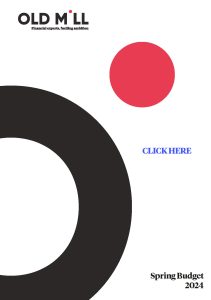Press enter to begin your search
Insights
Spring Budget 2024 Summary
Welcome to our Spring Budget 2024 Summary.

7th March 2024
Chancellor Jeremy Hunt delivered his ‘Budget for Long Term Growth’ on Wednesday 6 March 2024.
His speech promised ‘more investment, more jobs, better public services and lower taxes’.
Here we update you on all the announcements.
Get in Touch
If you have any questions, or want to discuss your individual circumstances with an Old Mill financial expert, please do get in touch by clicking here…

